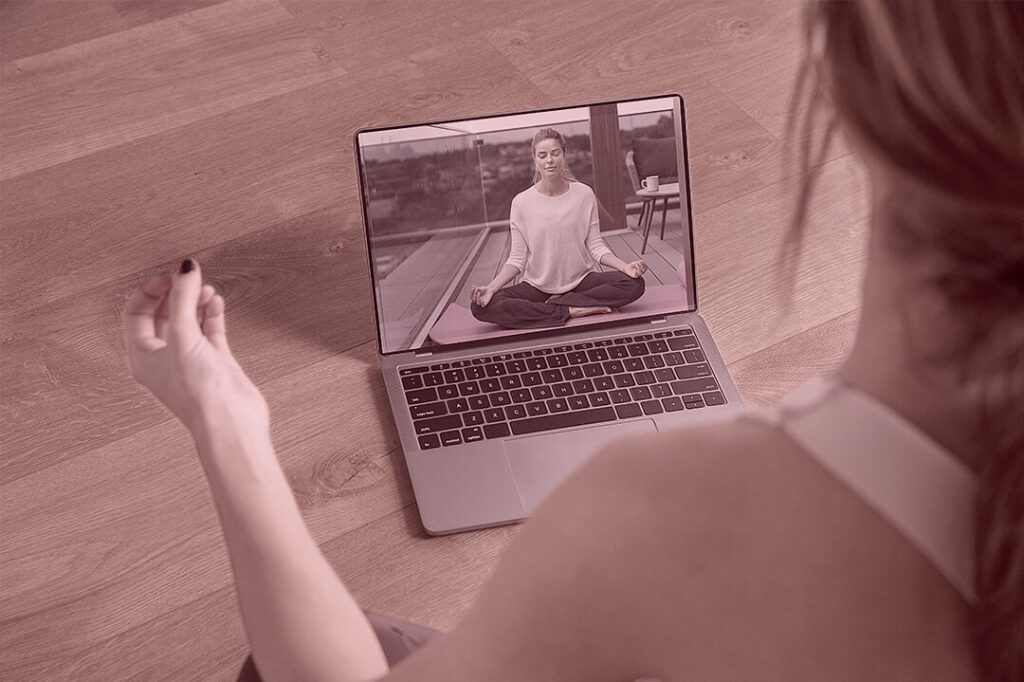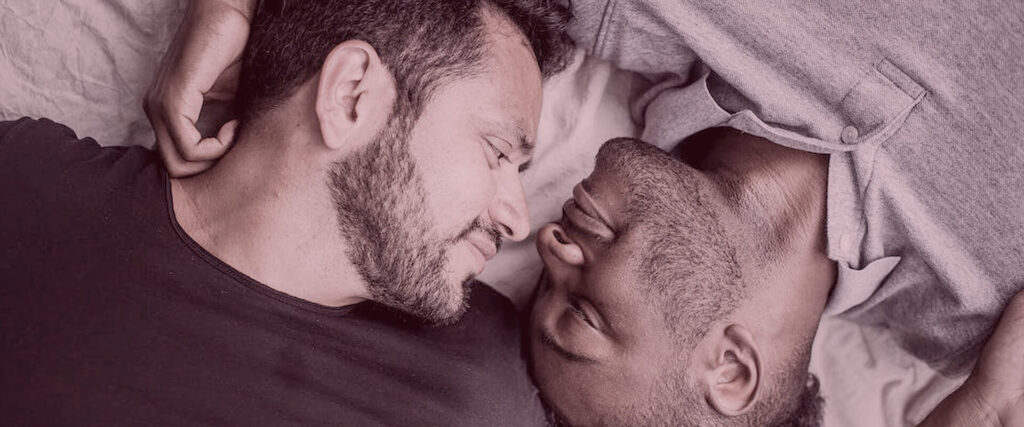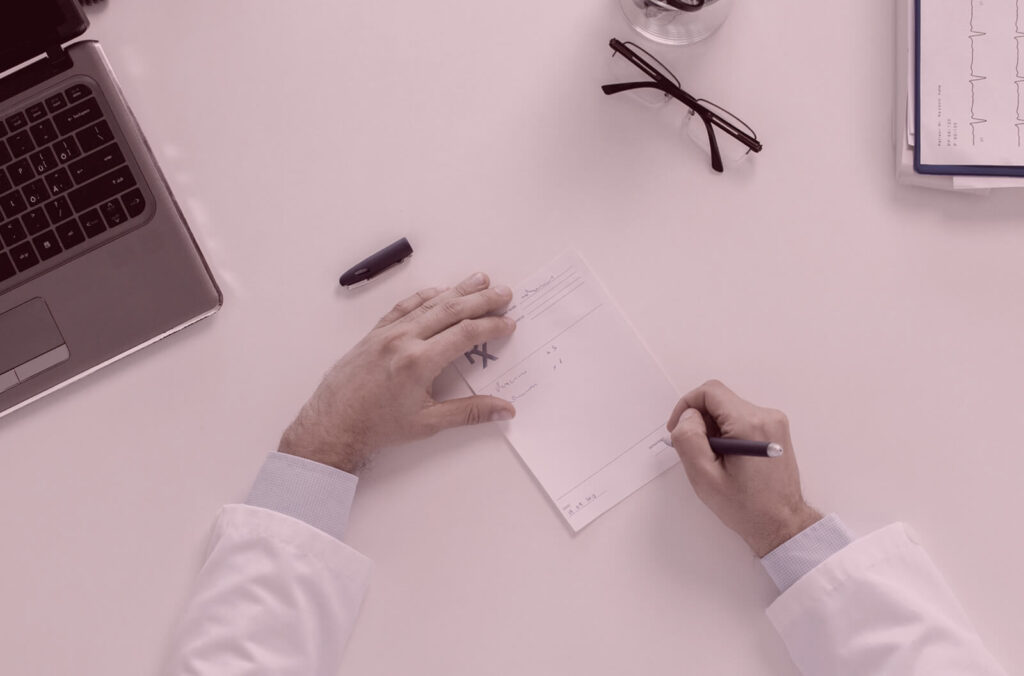Discover Your Attachment Style and Work with It!

How do I Help? & What is an attachment style?
In my private practice, I help people with various attachment style issues. To help them I first bring some behavioural and mindset issues to their attention as gently as I can. When the client agrees that there is an issue and says that they want to work on it I use various approaches such as Internal Family Systems Therapy, CBT, Values Work, mindfulness and lifestyle change guidelines to help them achieve amazing results in their life. This leads them to find more fulfillment, closeness to themselves and other, productivity and other wonderful benefits.
It is a style/pattern that we use to attach to other people. This style can be extended to not only family and romantic relationships but also to friends, acquaintances, therapists, or anybody else. This style will determine our behaviors and feelings which we may be experiencing while we are connecting with another person.
As children and later on as adults, we physically need human contact, it can determine our survival and physical and mental health. That is why attachment style is so important, we need to have one to attach to another person. The problem appears when this style becomes dysfunctional. Generally, we can trace attachment style to early childhood when we have learned what is safe in terms of interactions. It can be difficult to change your attachment style because it is ingrained in our minds as an automatic response. Nevertheless, we are able to override those automatic behaviours with our rational mind and change those to other functional habitual responses.
There are 4 main types of attachment:
-
Secure
-
Preoccupied (Anxious)
-
Avoidant
-
Fearful
Below we will discover where it originates, how it manifests, and how can we address the Preoccupied, Avoidant, and Fearful attachment styles.
I am text block. Click edit button to change this text. Lorem ipsum dolor sit amet, consectetur adipiscing elit. Ut elit tellus, luctus nec ullamcorper mattis, pulvinar dapibus leo.
Secure Attachment Style
The one that we should all strive for! It is this ZEN approach to relationships that comes from good self-regulation, self-esteem, and sound communication skills. Around 50% of people will have this attachment style.
People with a secure attachment style mostly come from families where it was ok to show emotions, cry and talk deeply about things. Families which promote this style in kids are present with each other and fulfill each other’s emotional needs. It means that when we were kids we could count on our parents (or a parent). The difference doesn’t come from the number of guardians/parents or their gender but from a deep sense of love a belonging that should come from a caregiver. This type of upbringing promotes self-trust and trust toward other people. Trust, however, does not mean being naive, people with a secure attachment style have also developed a good set of boundaries. This means they are able to differentiate between their opinions and feelings and other people’s opinions and emotions.
People who securely attach hold their partners and other people close to their hearts in high regard and treat them in a respectful manner. They are also able to feel loved by their parent or a partner even during turmoil and an argument and that gives them the ability to self-regulate better.
They are also more whole-hearted and courageous in terms of opening up to people and are very good at reading and giving social cues. That means that it is easy for them to read emotions and adjust to an emotional situation and help others regulate as well.
This also comes from knowing that they are going to be OK by themselves as well. In other words, they WANT to be with another person but do not NEED to be with that specific individual if it’s not healthy for them. They are also less likely to go into a toxic relationship because of higher self-esteem and a sense of self-worth. They are well equipped to recognise red flags and will not allow others to treat them poorly.
Of course, it is a generalisation! Even a securely attached person can fall for a toxic partner and have moments of weakness and emotional dysregulation. We can also manifest different styles while being attached to different people. Perhaps you were more on an anxious side while being with an avoidant person? But you are able to attach securely when you are in a relationship with another securely attached individual.
Securely attached people exhibit less of an emotional connection to negative cues and thoughts. They are able to forgive quickly and often do not seek retribution like other styles. They do not jump to conclusions and have realistic needs which they present to their partner. They are also not afraid of criticism and are willing to take a look at themselves to change for the better within reason. They seek closeness and are not afraid of being smothered or temporarily single.
But it is something to strive for! Wanna attach securely? Read on and discover your style so that you can change it in the future.

Preoccupied Attachment Style
The Preoccupied style is characterised by high levels of anxiety about the relationship, bond with the partner, and their own behaviours. In extreme cases, it could lead to codependence and Love Addiction. Around 25% of people will have this type of attachment but not all of those people will be codependent or Love Addicts.
This type of attachment style can originate from an upbringing that was very unpredictable. If your caregiver was sometimes there for you but would disappear from time to time or had mood swings it could start your Preoccupied attachment style. Also, if a caregiver had a mental illness such as bipolar or borderline personality disorder. Perhaps your situation was constantly uncertain? You were moving a lot or your parent was changing partners a lot?
It taught you that your situation is uncertain and you need to amplify your displays of needs. This can increase neediness and craving for attention. It is a birth of a pursuer in the relationship. Someone that wants to fix everything NOW and wants the attention NOW and a lot of it. They might expect unrealistic amounts of affection and attention and if they do not get it they can become manipulative, spiteful, or will be looking for fault in themselves.
They have good interpersonal skills and are able to read social cues better than Avoidant and Fearful types because they had a measure of adequate attention as kids. They are hypervigilant to social cues and would often jump to conclusions instead of analysing them realistically. This type would trust others but would not trust themselves. They want to be connected to others and are not afraid of closeness, being single can often be not fulfilling for them.
If the Anxious type is high on the spectrum it can evolve into codependence or Love Addiction. When that happens, even though their primary need is love and attention they would unconsciously be afraid of a deep connection that was absent during their childhood. People like this have very little to no boundaries in their relationships. They would give a lot and a lot of the time will not get much in return. This is why they would usually end up in relationships with Avoidant and Fearful types. Connection with those types will usually stay on a shallow level. If the intimacy in the relationship is too high the Love Addicted they might not feel very comfortable with it because they did not have it in their childhood and it might seem foreign and scary. They might act out more or become avoidant for a time.
Love Addicted would often be bored of Securely attached people because they would not have the extremities which they would have (and remember from childhood) in a relationship with Avoidant and Fearful types. They can also get codependent very quickly and idealise their partner, even put them on a pedestal.
To sum up, the Anxious attachment style is normal and common but we can work on it to change it to a more secure style. Very often in a presence of the right and secure partner Anxious types will be securely attached. The problem begins when the Anxious type evolves into a Love Addiction in which people are consciously afraid of being abandoned and unconsciously of being deeply connected.
Here are a few indicators that you might be a Love Addict:
- Issues with boundaries
- Not knowing oneself
- Not being able to explain who they are and their inner world
- Not loving themselves
- Low self-care
- Assign a disproportionate amount of time attention and value above themselves to the person to whom they are addicted. This focus often has an obsessive quality about it.
- Unrealistic expectations for unconditional positive regard from the other person in the relationship.
- Neglect to care for or value themselves while they are in the relationship.
- Idealise your partner
Avoidant Attachment Style
Love Avoidant type people will be withdrawn and guarded. They do not like opening up and talking about their feelings. They are ok with being by themselves or ending a relationship (but are they really?). As we discussed before we need social connection and validation at times. Research shows that children who have Anxious or Secure Attachment styles display some distress and have elevated heart rates when their attachment figure is removed from the same room. Avoidant kids were not displaying distress but also have elevated heart rates. This shows that all types are distressed but Avoidants chose not to show emotions.
Around 25% of people will have this attachment style. Those individuals are often chasing ‘The One’, the perfect person for them. Wanting someone that will be ideal in every way is realistically impossible. Although we could find our ‘Soul Mate’ the relationship will still require work from both sides and acceptance of each other’s flaws. They can get condescending and be constantly one foot outside of the relationship. Avoidants would often glorify their Exes and would not be entirely sure of what exactly went wrong. After their frustration whit the flaws wears off they feel fondness towards the person again.
Avoidants learned that one should cover their true feelings because it is not safe to show them as it was in the past. A portion of people having this type of attachment style come from abusive families where positive regard and attention were nonexistent or the caregiver was the source of negativity. Perhaps there was some psychological, emotional, psychical, or sexual abuse?
It is again a generalisation, a lot of Securely attached or Preoccupied might have also experienced abuse as children. At some point in their life, Avoidant learned that people are not safe to trust and one needs to protect themselves by withdrawing.
When a person faces severe Love Avoidance they can display some narcissistic traits and behaviours. They would often enter a relationship out of fear of saying ‘no’. They begin the relationship with love bombing and seduction and create an illusion of intimacy. When Love Addicted partner, which they usually pick, would start to feel overwhelming for them because of their unsatiable neediness they would put up a wall to create distance. They would start to seek the ‘extreme’ outside of the relationship often through addictions. Often coming from problematic and alcoholic families they can easily get dependent on drugs and other quick fixes.
The two main fears of a Love Avoidant are the same as the ones of a Love Addicted. Their conscious fear is of connection and their unconscious fear is of abandonment. They would often pick the Love Addicted because this type is quite similar to theirs and that is what they remember from childhood. We pick familiar partners because that is all we know from the past. Love Addicted can be easily manipulated and will often come back to the relationship even if the initial transgression was big and the amends minimal. Avoidants often feel superior to their partners and would resent them for being needy and inferior.
This type is not very good at reading and presenting social cues. In the past social cues were dangerous and you wanted to avoid them or the attachment figure was not there to give them. They can be good at picking up emotions, especially the bad ones which can be triggering. However, they did not have much of normal and positive social interactions which makes it hard for them to enact them and recognise them.
Some indicators of a strong Avoidant Attachment Style:
- Avoiding intensity within the relationship by creating intensity within their life usually by falling into addictions such as drugs, alcohol, shopping, etc.
- Avoid being known to protect themselves from being controlled by the other person.
- Avoid intimidating contact with their partner using a variety of processes called distancing techniques
- Seeking thrill outside of the relationship
- Feeling superior
- Resenting your partner
Fearful Attachment Style
This is a very toxic combination of Preoccupied and Avoidant attachment styles. This type will not trust themselves or other people and will switch between being Love Addicted and Love Avoidant at times. This is the most destructive type of all and is often found in abusive relationships and might be very hard to address in extreme cases.
But is not impossible to change!
When working with abusive relationships the most important is motivation and understanding. One needs to come up with a need to change and sufficient determination and discipline to make that change happen. And this needs to come from a deep understanding of your transgressions, the past, and what is possible in the future.
You will also need to forgive yourself so that you can peacefully move forward and be ok with your past even though it was not ok.
Recovery (for individuals high on the Avoidant scale, Love Addicts & Fearful)
- First, recover from addictions and codependence
- 6 months of self-work and putting a relationship on hold (if you are in one)
- Then 3 -6 months of reintegration of the relationship (if you are in one)
The total could be 3-5 years
PUTTING RELATIONSHIP ON HOLD
- Eliminate contact that is toxic. Ask yourself: What kinds of intimacy can’t take place?
- Have fewer interactions and ‘do’ intimacy only in healthy areas of life.
- Get off your partner’s back and go about your life. And don’t judge/observe your partner, go about your recovery
- Don’t Bomb with seduction or anger and do not respond to any of those kinds of provocations from your partner (breathe or leave the room instead)
- Notice who your partner really is
- Observe yourself too
You might feel the need for intensity because that is all you had. Recovering addicts may try being helpless or sexually provocative. Love Addicts may feel happy at first when they try to beat the addiction but withdrawal can come later.
LIST YOUR BOMBS
- Making partner angry?
- Seduction?
- Helplessness
- Threat to leave
- Getting even
WALL OF PLEASANTNESS:
No condescending or angry comments, calm means of detaching, it is a temporary part of recovery. The detachment phase is more difficult for love addicts.
Journalling can help:
- List addictive relationships
- How do you experience the symptoms?
- How are your emotions towards the ending of the relationship?
- Who your partner or ex really is?
- How did positive and negative intensity came into place in the relationship?
GRIEVING PROCESS:
- Finding out that not many people can give you constant positive regard and that it is your ‘bottle of alcohol’, is needed.
- Ask yourself: What was my fantasy?
- Ask yourself: How was my partner avoiding me?
- Claim the feelings from childhood
- Identify childish thinking and feelings, and releasing them
Stages:
1. Denial (I’m not codependent or abused; my parents and partner need to get better so I can too)
2. Blaming offender (I have codependence but my partner is codependent too so that is why I’m like that; I can hold my caregiver accountable)
3. Survival (relief from my feelings, personal power, and hope)
4. Integration (what happened gave me the depth of character) – you can reenter the relationship at this stage
LOVE AVOIDANT SPECIFIC RECOVERY:
- Boundaries protect from being controlled, create them
- Addressing the dysfunctional belief that needy dependent person is safe because they can be controlled – but they are not! It can be draining
- Ask yourself: Who am I? What are my and my partner’s values?
LOVE ADDICTED SPECIFIC RECOVERY:
- Create good boundaries
- Reality check your ideas about your partner
- Ask for permission and do not demand
- Be ok with hearing NO
- Find a sense of self – get hobbies and find your interests and do not lose them when you reenter the relationship
ENTERING OR RE-ENTERING THE RELATIONSHIP
- Body (request – would you hug me, hold hands, be sexual with me?) DO NOT DEMAND
- Thoughts (sharing thoughts, setting up a meeting, asking for permission to talk)
- Feelings (asking for permission to share)
- Support (leave the room to self-regulate and make a decision; See Time-Out Procedure – blog post)
- Honesty (some things should be kept private, but be honest about your realistic needs)
- Acceptance (If the request is not granted you need to learn how to accept it and be happy for your partner that they were able to look after themselves and be assertive)
I have outlined all 4 types of attachment that people use to connect to others. Keep in mind that it is not a 100% accurate description for everyone on this planet but a scale on which you can perhaps find yourself. The spectrum is broad and we can switch between the types on daily basis by performing certain behaviours or while being with different partners. Here are some adjustments which you can make if you realise that you are leaning towards a certain type.
Adjustments for the Anxious:
- Acknowledge and accept your true relationship needs. It does not mean knowing 24/7 where your partner is or always being in close proximity to them, establish your realistic needs.
- Do not feel bad for wanting to be in a relationship or feeling unfulfilled when you are not in one.
- With the use of reality checks and accessing your true feelings try to find a secure partner who will fulfill those needs.
- Rule out people with avoidant attachment styles early on.
- Instead of performing manipulative behaviours or tantrums try to access your feelings and have an honest discussion about them with your partner.
Adjustments for the Avoidant:
- Do not act on impulses, try to be mindful of them.
- If you start to ruminate about your partner’s imperfections and feel the need to perform deactivating/avoiding behaviours try to do a reality check.
- Deemphesise self-reliance and focus on mutual support.
- Find a secure partner.
- Be aware of your tendency to misinterpret behaviours. Look for a more plausible perspective.
- Make a relationship gratitude list.
- Lose the idealised Ex image.
- Forget about ‘Finding the One’. Work and commitment need to come from both sides. People who want to find an ‘Ideal’ Partner will most likely be disappointed because no one is perfect.
- Adopt distraction strategies. Use healthy distractions to stop yourself from performing avoiding behaviours and allow yourself access to your true feelings.
It’s all about finding your balance and a Secure person who will fulfill your true needs.
To find out more and enhance the quality of connection in your relationship try sexual therapy online or sex therapy in Sydney. If you do not have sexual problems general couples therapy and marriage counselling are also viable options.
If you are single join therapy to get to know your attachment style and find out how to live relationally and become the best partner. By being the best version of yourself you can attract your future partner.
Ask a sexologist online for guidance and an appointment now.
Explore other articles, books and online courses. Or work with me, explore my services on the Home Page. Book your FREE 15min phone consult.











